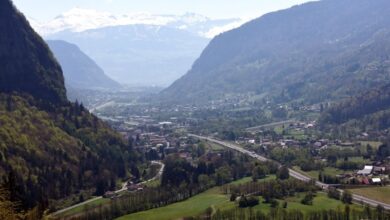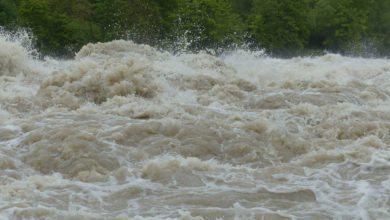Millions in Indian capital endure ‘eye-burning’ smog

Millions of people in India’s capital started the week on Monday choking through “eye-burning” smog, with schools closed, cars taken off the road and construction halted.
A poisonous haze envelops New Delhi every winter, caused by vehicle fumes, industrial emissions and smoke from agricultural burning in neighbouring states.
But the current crisis has turned into the worst in three years, and New Delhi Chief Minister Arvind Kejriwal called for a range of measures to fight what he described as “unbearable pollution”.
“There is smoke everywhere and people, including youngsters, kids, elderly are finding it difficult to breathe,” Kejriwal said in a Twitter video on Sunday.
“Eyes are burning. Pollution is that bad.”
Kejriwal’s government has ordered half the city’s private cars to be taken off the road, based on an odd-even registration plate system.
On Monday, drivers with even-numbered license plates were the lucky ones. Morning traffic was thin and drivers appeared to be obeying the rule — a Reuters reporter saw no vehicles with odd-numbered license plates on the streets.
“It’ a huge inconvenience because I’m not going to make it on time for my meetings,” said Sagar Bajaj, 29, struggling to find a taxi in central Delhi’s busy Connaught Place.
Bajaj said he normally drives to work but his car’s licence plate ends in an odd number.
Ride-hailing services were exempt from the rule and both Uber and Ola had announced they would not impose surge pricing for the duration of the odd-even scheme.
Schools, which were closed on Friday last week, remained shut on Monday, and city-wide construction was halted until Tuesday in Delhi and surrounding areas.
Kejriwal said authorities were also distributing face masks to schoolchildren.
Other parts of the country have also been choked by smog, the government’s Central Pollution Control Board said Sunday.
Authorities brought a van with an air purifier to the Taj Mahal, the country’s top tourist site 250 kilometres (150 miles) south of Delhi, with fears the pollution was damaging the 17th-century marble mausoleum, the Press Trust of India reported.
With a state election due in Delhi in early 2020, the pollution crisis has also become a casualty of political bickering, with each side blaming the other for the severe conditions.
Kejriwal, who likened Delhi to a “gas chamber” on Friday, said his city had done its part to curb pollution and that the burning of wheat stubble residue on farms outside the capital was responsible for the smog.
But national environment minister Prakash Javadekar accused Kejriwal of politicising the issue, while an MP from the governing Bharatiya Janata Party (BJP) dismissed the odd-even car rule as a “stunt” and said he planned to ignore it.
A group of environmentalists wrote to Prime Minister Narendra Modi on Sunday urging him to “take leadership” on the issue.
Mounting crisis
India has faced a mounting pollution crisis over the past decade.
Fourteen Indian cities including the capital are among the world’s top 15 most polluted cities, according to the World Health Organisation.
Experts warn that both state and national governments needed to go beyond short-term remedies and tackle major pollution causes if air quality is to improve in the long-term.
Stop-gap solutions “can’t be a substitute for addressing the major long-term chronic sources of air pollution,” Daniel Cass, senior vice president for environmental health of global non-profit Vital Strategies, told AFP.
He said emissions restrictions should be imposed on motorbikes and scooters, which are heavily used in Delhi but exempted from the odd-even scheme, and called for more public transport investment.
Changing agricultural practices, switching electricity generation sources and accelerating the conversion of home-heating from charcoal to natural gas were also key measures in the pollution fight, Cass said.







